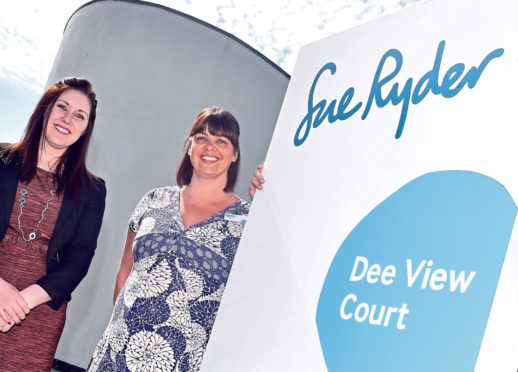MSPs went scuba diving and on safari yesterday as they joined the campaign to support the expansion of an Aberdeen neurological centre.
Virtual reality technology was used to allow ministers and local politicians to escape Holyrood and discover how people with brain conditions can benefit from the experience of walking with elephants and swimming with turtles.
The reception, which was hosted by North East Labour MSP Lewis Macdonald, aimed to highlight the shortage of facilities across Scotland, and raise the profile of the £3.9million expansion of Sue Ryder’s Dee View Court in Aberdeen.
The facility in Kincorth is the only one of its kind in Scotland, offering round-the-clock care to 24 residents, and potentially a further 20 people in the future.
Pamela Mackenzie, director of neurological services at Sue Ryder, said: “There’s a huge shortfall and deficiency in neurological care across Scotland, so it’s really important that we address this now.
“We’re expanding our facilities in Aberdeen, we’re doubling the facilities so we can reach more people, but we know that isn’t enough and we know we’re limited in what we can do, but we do what we can.
“Things like the virtual reality that you’re seeing today can make a huge difference to people – it can make the difference between, if you’re living with a complex condition, the difference between and good day and a bad day.”
Mr Macdonald was among a series of MSPs to try out the virtual reality goggles at yesterday’s event.
He said: “It was great fun. It was very calming. You’re inside it and it becomes the reality.
“You can understand how it works and especially for folk who don’t get the opportunity to see and experience these things, it’s fantastic to be able to do that, for five minutes or as long as they want.
“Sue Ryder are using it for people with neurological conditions, so folk who have for example Parkinson’s, Huntington’s, MS at an advanced stage, who aren’t able often to get out of bed, but it has also been used for people with dementia.
“What they find is it reduces blood pressure, it calms and relaxes, and for some people who have lost the use of their limbs, they want to walk and they want to do things, it keeps muscles alive.”
Public Health Minister Joe FitzPatrick told the reception that the government was finalising the first draft of its national action plan for neurological conditions – the first of its kind in Scotland.
